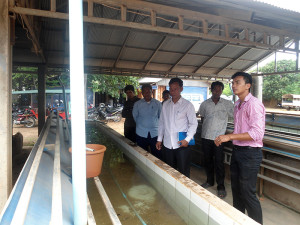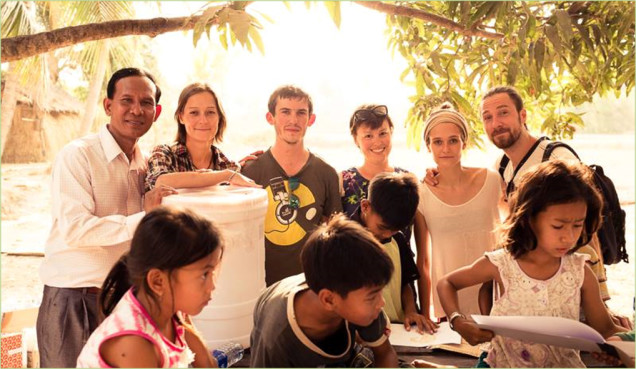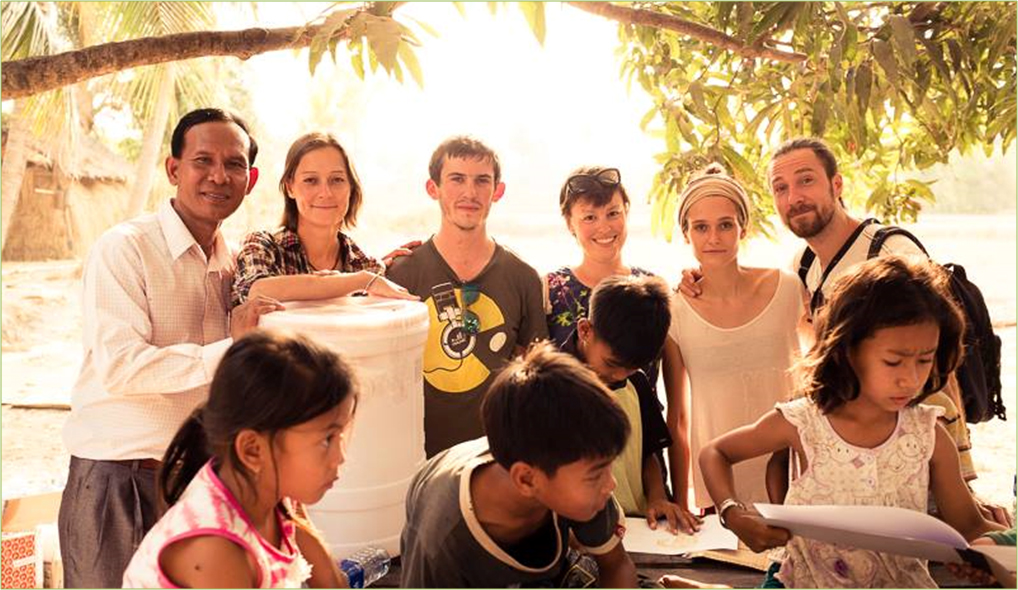Water is a fundamental human need. It is estimated that one person needs 10-40 litres of clean, safe water a day for drinking, cooking, washing, and personal hygiene. Access to clean water is a step towards improving living standards. Education suffers when sick children miss school. Economic opportunities are routinely lost to the impacts of rampant illness and the time-consuming processes of acquiring water where it is not readily available. Children and women bear the brunt of these burdens.
The Facts: Cambodia
-
100
-
Diarrhoeal disease is the number one cause of death in children under 5 years of age in Cambodia.
Source: UNICEF. (2006). Cambodia Statistics. Accessed 14 December 19, 2009
In late January 2013 a household survey was started in the village of Som Roung by the SCOOP Development Officer, Peter, from Ireland. This survey aimed at finding out some of the main issues that lay in the community. There were three main areas that stood out, lack of access to clean water, access to a toilet and access to healthcare treatment. In response to this SCAO looked at what it could do to improve the livelihoods of the people in the village. The first project we wanted to implement was the most urgent, improving access to clean safe drinking water.
After extensive research into the best ways to implement this project we found another Cambodian Organisation called RDI Cambodia. RDI are specialists in water treatment and have been in operation in Cambodia since 2003. As RDI were experienced in the area of water treatment, they were the perfect organisation to help us facilitate the project. After communicating with RDI several days we set in place a plan to attend training, a demonstration of the filters to the people of Som Roung and distribution of the water filters.
So how does the Ceramic Water Filter work?
Two processes are at work. Because the mixture of rice and clay produce small micro pores, parasites, amoebas, and large bacteria cannot flow through due to mechanical processes. Simply put, water can fit through the pores, most disease causing organisms cannot. The coating of colloidal silver adds a chemical process to stop other bacteria. Together, this system eliminates 98% of the harmful diseases present in surface water.
RDIC now adds laterite to its clay mix. Laterite, a material high in Fe oxides, the positive charges of the Fe oxides have demonstrated a removal action of the largely negatively charged virus’ in tests at RDIC.
Training
On the 20th of May, the staff of SCAO attended a training demonstration at RDI Cambodia in order to successfully implement a water filter project into Som Roung Village. Here we were given a detailed tour of the factory and how the ceramic water filters are produced. After this the SCAO staff was then trained on how run their own demonstration of the water filters. This training included how to use, clean, store and maintain the water filters correctly in order to increase their lifespan. As well as how to use the flip chart and DVDs correctly, as to fully inform the people of the village how the filters work.
 After this training day we organised the people of the village to attend a demonstration of how the water filters work and the project that SCAO was going to implement. This demonstration was presented by Vibol and there were over 40 families attending. This presentation was a huge success and the families saw the immediate benefit that the ceramic water filters could have for their families. All the families that attended the demonstration said that they would take a water filter, and the community board would announce it to more members of the community to see if more people were interested.
After this training day we organised the people of the village to attend a demonstration of how the water filters work and the project that SCAO was going to implement. This demonstration was presented by Vibol and there were over 40 families attending. This presentation was a huge success and the families saw the immediate benefit that the ceramic water filters could have for their families. All the families that attended the demonstration said that they would take a water filter, and the community board would announce it to more members of the community to see if more people were interested.
Our partner organisation from the United States, Pacha Youth, would be funding the project. After discussion with some of the community board members in Som Roung, we decided that the families would pay a financial contribution of $2 towards the filter, with Pacha Youth supporting the remaining $8. The reason behind the contribution of $2 from the families is to give them a sense of ownership over the filter, and not just charity. This way the families will take better care and maintain the filter.
At the start of June we put in the order for the water filters for the village. The arrived two days later and on the 8th of June we organised for all the families who had paid for a water filter to come to the school at 2pm. It was at this time that we gave another presentation to the community on how to use, clean and maintain the ceramic filters. It was important to reiterate this focal point; if the family did not know how to clean and use the filter properly it would not have a long life span, thus undermining the project. During this meeting of the villagers we were also able to record some information in relation to their family. This would be important to find out how many people would now have access to clean drinking water.
In March 2015, we carried out another survey and distributed water filters in cooperation with the Phnom Penh-based Polish organisation Czysta Woda / Clean water for Cambodia in the village of Prey Ponror. Prey Ponror is 25 located 25 kilometres outside of Phnom Penh and we are currently building a third school there. You can read about the water filter project here.

